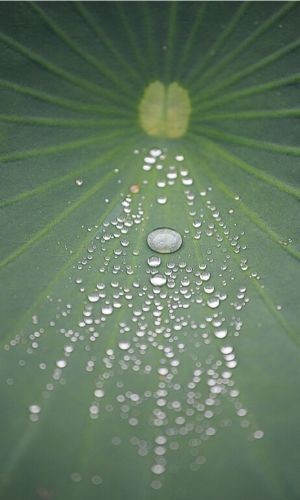
Mother nature is an amazing architect and all the biomechanics, and chemosynthetic activity is designed to ground-up from day one. For example, the lotus flower is bio-engineered to allow water droplets to roll down. While rolling down, it cleans the sides from impurities like dust too. Yet, water drops are attached to the petal walls, not rolling down all the way.
This observation encouraged Patricia Weisensee, assistant professor at the McKelvey School of Engineering to create something from this natural design. Amazingly she had conceived a design that used two aspects of the lotus flower's natural design that will be interesting to note. Two of these concepts are based on material and engineering design that is becoming more important than ever.
Designing the cooling method had to be designed to overcome super hydrophobic surfaces that only resisted water. Instead, it was later revised to hold onto water better, not make it slide off the surface. Quite similar to the natural design of the lotus, or at least how it allows droplets to stick to it. Making a surface that kept water attached and not repel seemed a better option. Another thing is hydrophobic performance is not always the answer for every design.
Factors that affect hydrophobia are evaporation or heat transfer not exactly ideal due to how droplets slide in an instant of contact with any surface. The opposite of hydrophobic is hydrophilic that allows water drops to linger on the surface. Comparable to Velcro that hooks onto clothing, this instead allows water drops to latch on the material surface and form puddles.
Several ideas are important to create this material that would have unique water holding and repelling properties. One is that it would have both repellent capabilities and retention at the same moment. This would counteract the tendency to hold too much moisture and yet still retain enough water for cooling. Once the mechanics of balancing hydrophobia and hydrophilic designs, it would lose and keep water without drying up and avoid flooding.
Placing a drop of water on a hot surface, in a horizontal orientation with experimental water-repelling and retention characteristics in one. To see what happens to the engineered material, using optical and infrared imaging to see how the droplet will turn out. Throughout, the experiment the changes were tracked and cataloged.
The observations made were the following, by the researcher.
a) Results were expected when a horizontally oriented surface with symmetry was observed. But, when on a horizontal orientation, it was not the exact result. The droplet defied the expected result and will need more investigation.
b) In the center of the hydrophobic material, is a hydrophilic spot that made the water drop stick to it like Velcro. The researchers then concluded without, the water drop would just drip down.
c) Changes in the heat pattern are not the same, not the result expected. Differences in heat, like less heat at the bottom and hotter at the top of the drop. An indication of heat transference in the lower part of the drop to the higher part too. This is called the evaporation-limiting wedge effect of the air surrounding the drop.
d) Another thing done was adding particles to check how convective currents in it. Looking for more changes.
From all this, the cooling method designed holds promises more material and engineering updates for technological and other applications. Making materials that have hydrophobic and hydrophilic properties will be another step to obtain better cooling designs based on nature, like the lotus.
Related Article: More Efficient Thermal Cooling Method Bioinspired by Plants
© 2025 ScienceTimes.com All rights reserved. Do not reproduce without permission. The window to the world of Science Times.











